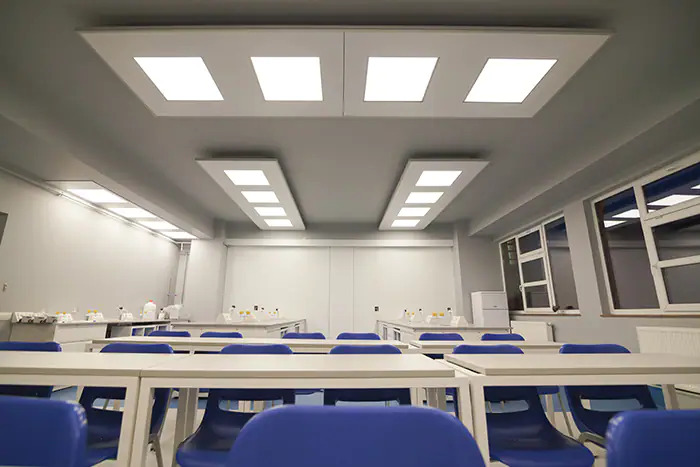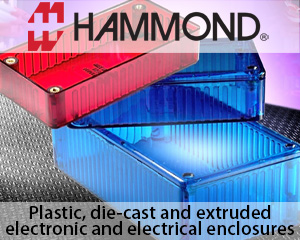Energy-Efficient Building Control Systems Maximize Savings

Energy efficiency is the driving force in the growth of the LED lighting market, whether it’s private enterprises trying to reduce cost or public entities imposing regulations intended to scale back energy consumption and lower the burden on existing resources. The LED lighting market’s residential and commercial sectors are expanding rapidly as LED lighting surpasses older technologies in energy and cost efficiency.
LEDs and luminaires made up about 19 percent of the total amount of installed lighting units in the U.S. in 2017, but that number could jump to 84 percent by 2035, according to the Department of Energy (DOE). The DOE expects almost 80 percent of the total LED lighting stock in 2035 to be in the residential sector, but the commercial sector is expected to yield far greater energy savings. Despite accounting for 17 percent of the total LED market in 2035, the commercial sector could be responsible for 39 percent of the total energy saved, according to DOE projections.
The gap between the percentage of total LED installations and the percentage of energy savings is attributable to lighting-control methods implemented increasingly common in large commercial settings. Lighting-control systems can reduce energy consumption by automatically turning off lights in unoccupied buildings or dimming them when natural light is available. In the following, we’ll examine how LED lighting-control systems can be used to limit a commercial or residential building’s energy consumption by adjusting the internal lighting when natural lighting or high/low occupancy prompt it to do so.
Implementing a Responsive Lighting System
The major components of a responsive lighting system include:
- LED light sources,
- Power control devices
- Sensors and microcontrollers implemented to provide the distributed intelligence required to control the lighting and communicate with the system’s various sensors.
These system-edge microcontrollers also communicate with the higher-level, sub-system controllers— usually implemented with more powerful microprocessors—as more complex algorithmic and storage functions are required at the sub-system level. Wireless communications from these sub-systems to the main building controller make placement and expansion of the system relatively simple. The main building controller usually requires an industrial-grade computer programmed for fault tolerance to provide building safety and reliability, and communications between buildings on a campus (and to the cloud) can be used/analyzed by advanced adaptive and/or predictive algorithms.
Daylight harvesting is one of the primary ways that companies can save energy (and money) in big office buildings. Although it sounds like a process involving solar cells and batteries, daylight harvesting is simply using natural light and heat to illuminate and/or warm a building when it’s available. For instance, a lighting-control system can dim the lights on the east side of a building in the morning, when the sun is presumably shining through the windows, and then bring them up in the afternoon when the sun shines on the building’s west side.
The amount of energy that can be saved with daylight harvesting varies based on how a building is situated relative to the sun (north/south vs. east/west) and on geography. Silicon Valley in northern California has more natural daylight to be harvested than Seattle.
Natural light levels can be adjusted with tinted or shaded windows to meet the needs of a given workplace scenario. A conference room during a PowerPoint presentation might not need as much light as an employee working at his or her desk might. Occupancy sensors are another commonly employed technology in lighting adjustment. Motion sensors in a particular room or on a particular floor of a building will automatically request that the lighting-control system dim the lights if it has been unoccupied for a predetermined period. Occupancy sensors are often employed in conjunction with a timer function that dims all the lights in the building after its occupants have typically left for the day and brings them back up in the morning when employees arrive for work. It’s difficult to calculate how much energy a specific business might save by using lighting control systems equipped for daylight harvesting with sensors and timers (variables include building size, operating hours, types of LED technology being implemented). The DOE does project that, if the rate of LED penetration continues at its current pace, the energy savings nationwide will amount to 4.8 quadrillion British Thermal Units (BTUs) annually by 2035, approximately half of the total energy lighting consumed in the U.S. in 2017.
Integrated Building Control Systems and the Cloud
A building’s lighting-control system is a part of a larger control system that includes environmental controls such as heating, air conditioning, air circulation, and air quality in addition to building security and safety. Because of the close relationship between lighting and heating, it can be important for the building control system to consider heating, cooling, and lighting needs to optimize building comfort and energy efficiency. Letting sunlight in through the windows can help illuminate the building’s interior, but it might also raise the internal temperature. If cooling the building is the goal (and the energy it takes to regulate the internal temperature exceeds the energy the LED lighting requires), a better balance might be struck using additional LED lights for illumination while minimizing external sunlight. Air circulation and air quality requirements might also need to be balanced with ambient lighting. In some cases, creating small temperature differences between portions of the building could create convection currents that naturally help with air circulation, cutting the need for energy-draining fans to circulate air.
Finding a way to balance these competing needs and requirements might seem complex, but a modern control system can use the building’s history to simplify the process. Previous settings and results can be stored in the cloud and analyzed to see what combinations were most cost- and energy-efficient. The system might experiment by tweaking the settings to explore the solution space for optimal comfort and energy consumption—and to discover even better algorithms. The control system could then select the optimal algorithm based on expected weather conditions, building occupancy, available solar energy, and/or other expected conditions. Deviations from expected results might indicate excessive wear or aging of motors or sensors, allowing predictive maintenance algorithms to flag potential failures and repair or replace them in time to avoid an outage.
Light Temperature and Light Loss Factors
Commercial LED lighting implementations can often adjust the light temperature to meet specific needs. The LED Kelvin temperature (K-temp) rating measures the relative warmth of light from various points on the spectrum. A warmer, orange/red light has a K-temp of about 2000, while cooler, blue light checks in at about 6000. Offices will typically use warmer light, the type most like natural daylight. Cooler light might be a better fit for retailers or supermarkets with display merchandise. Supermarkets might want to use a different K-temp to display produce than boxed or canned goods. Clothing and furniture retailers might prefer different temperatures of artificial light to display their products depending on color and material type.
LED lighting systems for both residential and commercial should account for Light Loss Factors (LLFs). LED lighting typically depreciates in quality far slower than incandescent and halogen bulbs, but they will lose strength over time. It can be difficult to accurately measure the degree to which LED lighting has diminished over time because of the various types of technologies that LED lighting systems employ. Still, the Illuminating Engineering Society (IES) uses the Lamp Lumen Depreciation (LLD) factor as a catch-all to approximate how LED lighting deteriorates from the point it is installed until it needs to be replaced. An LLD factor of 0.70—meaning an LED unit is emitting 70 percent of the light you’d expect a brand new unit to produce—is considered the threshold at which individual bulbs or lighting arrays need to be replaced. LED lighting requires replacement far less frequently than older technologies, saving companies energy (and money) over time. Light depreciation can be a bigger factor in some implementations more than in manufacturing settings because low-light levels can be dangerous for the human workforce. Streetlights and other forms of outdoor lighting also require maintaining high performance levels, making LED lighting a better long-term solution in these settings than more conventional lighting methods.
Conclusion
Reducing energy consumption is one of the few areas where public and private sectors seem aligned. Companies and governments are seemingly investing more in LED lighting and other forms of energy-saving technology. In the commercial sector, the adoption of LED lighting and lighting control systems could result in cutting the amount of energy consumed by lighting in the U.S. by as much as half in the next 15 years, according to the DOE. With the smart home revolution fast approaching, it might not be long before you see residential buildings designed with LED lighting-control systems that adjust the lighting in different rooms to match the levels of natural light those rooms are exposed to throughout the day. If you wonder whether you remembered to turn off the light on your vanity before you left for work in the morning, don’t worry. The motion sensors in your bathroom will tell your home’s lighting-control system to dim it after you’ve walked out of the door.







